The following text is a slightly modified machine translation and may have some unnatural parts.
==Introduction==
I remember hearing in a geography class when I was in the first year of junior high school that there was the same shrine in Hamada City, Shimane Prefecture, as in Shikoku. Time went by without knowing where the shrine was. However, I found out that it was Taimasan Shrine on the side of a mountain called Taimasan, which is about 560 meters above sea level. The other is the Omatsuri AmenoIwatoHiko Shrine (Sanku Shrine) in Aioi-Town in Hamada city. Located in Shikoku are the Oasahiko Shrine and Ama-no-Iwato-Wake Shrine in Tokushima Prefecture.
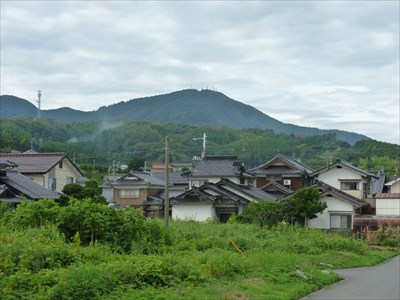
Mt. Taima
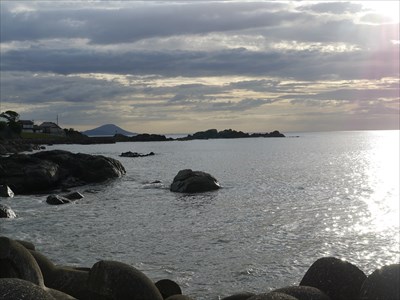
Mt. Kouyama from Kamate

Taimasan Shrine
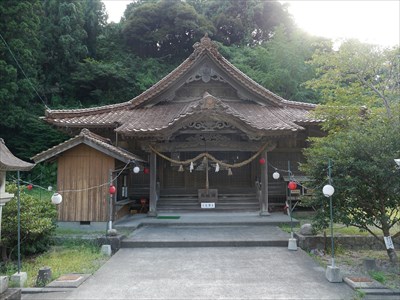
Omatsuri AmenoIwatoHiko Shrine
Iwatowake (岩戸別)'s "別" is read as "Wake". It has the same meaning as Hiko (彦). The name of the boy. Originally, Mt. Taima (大麻山) is read as Oasayama or Omayama, but locally it is called Taimasan.
The legend of the rock-throwing battle between Mt. Taima and Mt. Kouyama, which is discussed in this article, was once re-storied. And I would like to see that the original legend has been overwritten by the re-story.
==Legend==
As a legend about Mt. Taima, the Awa Inbe tribe has colonized the western part of Hamada City in ancient times. At that time, there was a collision with the Ono tribe who lived around Mt. Taima and threw rocks at each other.
The following legends are recorded in "The Legend of Izumo and Iwami: Legend of Japan 48" published by Kadokawa Shoten. The Awa Inbe tribe led by Oasahiko landed from Orii Beach. .. Then, he threw a large stone from Mt. Taima toward the Ono tribe who lived in Onohara in Misumi. The Ono tribe was temporarily pushed to Susa, Yamaguchi Prefecture, but counterattacked and threw a large stone. Eventually, the Ono tribe returned to Ono, and the Inbe tribe decided to occupy the mountain (99-100P).
By the way, Oasahiko is depicted as a twisted god who rides a horse, crosses the sea, and when he reaches the beach of Orii, he will go on land by boat. This legend is also a tale of the abundance of rocks around Mt. Taima and Mt. Kouyama.
As a similar story, there is a folk tale that Otogo's Mt. Gongen (Mt. Hirefuru) and Mt. Taima compared their heights and threw rocks at each other in Masuda City.
I uploaded something like the above as a blog post, but there was a blog that said that someone probably read it, and that it felt strange. It seems that there was a nuance that the Awa Inbe tribe had expelled the indigenous Ono tribe from Hamada. Also, did the Inbe tribe really settle in Hamada in the first place? It was a content that raised doubts. So, I decided to investigate. it is like locking the stable door after the horse has bolted.
==Consideration==
First of all, about the Ono tribe. Ono Shrine, which enshrines the ancestral spirits of the Ono tribe, is located in Toda-Town, Masuda City. In addition, Kushiro-Ame-no-Koketuhiko-no-mikoto Shrine is located in Kushiro-Town, Hamada City, and Kushiro-Kahime Shrine is located in Kushiro-Town, Masuda City, as a shrine dedicated to the ancestral spirits of the Kushiro tribe. The Ono and Kushiro tribes are in the Kasuga lineage. In addition, there is Ikan Shrine in Shimokou-Town, Hamada City as a shrine that enshrines the ancestral spirit of the Kasuga tribe, AmaTarashiHikoKuniOshiHito.
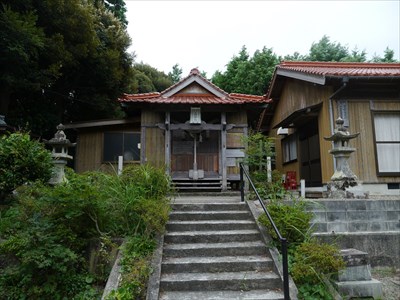
Ono Shrine

History of Ono Shrine
In this way, the tradition that the Ono tribe was settled in the western part of the Iwami region in ancient times is accompanied by reality. On the other hand, looking at the Inbe tribe, it is said that the Awa Inbe tribe was solicited when it became the mountain guard of Iwami in the reign of Emperor Ojin in the tradition of the Omatsuri AmenoIwatoHiko Shrine. In addition, it is said that Taimasan Shrine was solicited from Mt. Oasa in Awa in the 9th century.
The deity of the Taimasan Shrine is AmenoHiwashi, the ancestral spirit of the Inbe tribe, and also enshrines SarutaHiko and Oasahiko (Futodama). The deity of the Omatsuri Ame-no-Iwato-HIiko Shrine is said to be the same god as the Tajikarao. It is a god related to Iwato mythology. By the way, AmenoToyoTarashiKaraHime-no-Mikoto Shrine is also said to be closely related to Taimasan Shrine and Omatsuri AmenoIwatoHiko Shrine.
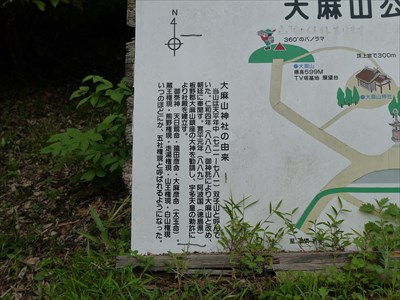
History of Taimasan Shrine
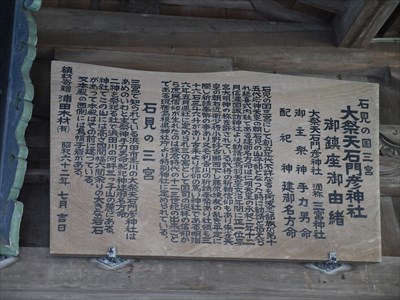
History of Taimasan Shrine
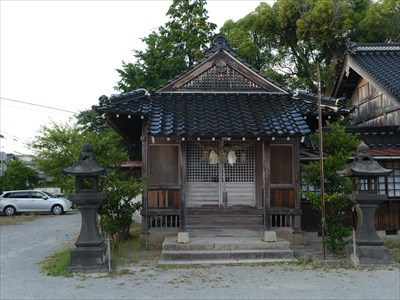
AmenoToyoTarashiKaraHime-no-Mikoto Shrine
I'm not sure if the Inbe tribe actually came to Hamada like this. However, since they solicited a shrine closely related to the Inbe tribe, it is conceivable that there was some kind of connection.
I wrote the blog post in March 2008, so I think it was the summer of previous year. When I went to the Masuda City Library and looked up "Misumi-Town Magazine", the legend of the rock-throwing battle between Mt. Taima and Mt. Kouyama was recorded. This was written by Jitsuro Terai, the author of "Myths and Legends of the Misumi Region," by conducting a field survey while systematizing the historical facts of Misumi. And it was written that myths were woven into history.
In other words, this legend was re-storied by Jitsuro Terai. The editor of "The Legend of Izumo and Iwami Japanese Legend 48" is Tadayoshi Sakai, and it is believed that Mr. Sakai also wrote the legend. It is believed that this legend was widely established when Mr.Sakai adopted this re-storied legend as it was.
==Synopsis==
After that, in 2016, I finally went to Hamada City Misumi Library and was able to read "Myths and Legends of the Misumi Region". The outline is as follows.
Although the unification of Japan was largely achieved by the transfer of the country (Kuni Yuzuri), but Izumo's prosperity continued for a long time. Fearing the power of Izumo, the imperial court relocated the highly trusted clan to the area around Izumo to monitor it. It is said that the Ono, Wani, Mononobe tribe, and Onitone tribes have come to Iwami Country. It is said that the Inbe tribe also settled in Iwami. It seems that they didn't live in harmony. There is a legend that Mononobe clan defeated the Oni demon who lived in the cave at Oni-ga-shiro (Oni's castle) in the south of Mt. Taima. This may have been a conflict between the Onitone and the Mononobe clan. There is a legend that Mononobe clan defeated the shark that lived in Minato's Wanijima, but because the shark was quite strong, They pushed them into the Misumi River. This probably conveys the conflict between Mononobe clan and Wani (shark) tribe. A well-known conflict between these immigrant clans is the turmoil between the Inbe tribe and Ono tribe.
It is reported that Oasahiko, the general of the Inbe tribe, has crossed the sea on a horse. There was a twisted god. When he reached Orii's beach, he got off his horse and threw his horse's saddle into the sea, saying he was going by boat. It is said that it became Kurashima-Rock on the Orii coast. Oasahiko on the boat climbed Mt. Taima. When Oasahiko stood on the summit and looked down at the surroundings, a figure was seen in the present Onohara (Hara means a field). He began to throw out Large stones to get rid of it, which was annoying. The Ono tribe was surprised. The Ono tribe barely fled westward alive. Oasahiko never rested and rained stones on those who fled. The Ono tribe crossed the Takatsu River deadly and finally reached the Mt. Kouyama of Susa. This area is within the power range of the Ono tribe, and immediately began to fight back toward Mt. Taima. While stones fly from Mt. Taima, stones are thrown from Kouyama as well. However, while the stones thrown from Mt. Taima graze at the top of Mt. Kouyama, the stones thrown from Mt. Kouyama only reach the foot of Mt. Taima. When this happened, the inconvenience spread to the surroundings, and there was something to arbitrate. As a result of the slapstick, the Ono tribe's indigenous rights were recognized and they returned to Ono. Negotiations were settled by taking the mountain as a Inbe tribe's territory. The sea on the west side of Kouyama is still filled with large stones on the seabed. It is said to be a stone thrown by Mt. Taima.
==Consideration 2==
The contents are as above. Of these, it is believed that the legend of the rock-throwing battle between Mt. Taima and Mt. Kouyama was extracted and incorporated into the "Legend of Izumo and Iwami". After reading it, it seems to be re-storied to a large extent. In other words, by being re-storied, it became impossible to understand what the legendary prototype was like. It is a legendary overwrite save.
Regarding Mononobe clan, there is a Mononobe Shrine in Oda City, Shimane Prefecture, and there is a theory that Mononobe clan moved to Iwami in ancient times to check Izumo. In fact, it is said to be one of the highest Mononobe shrines in the country. However, it is said that there is no historical evidence of Izumo diversion.
Extracting what seems to be the prototype of the legend from these is as follows.
- * The thrown saddle became an island
- * Mountains fought and threw stones
- * Conflict between neighboring residents
- * The absurdity of crossing the sea by horse and going by boat
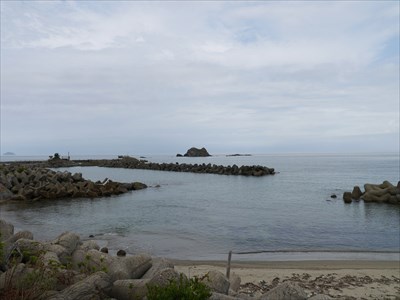
Kura-shima in Orii coast
Of these, the neighborhood turmoil was recorded in the article of Taimasan Shrine in the former history of Shimane Prefecture and the era of Kuni-no-Miyatsuko's politics. according to it. In ancient times, the battle between Ino Village and Taima Village began and Heavenly Horse ran around. The simple content is that the stone with the mark still remains on the hillside of Mt. Taima.
There is no clan conflicting element in the conflict between Ino Village and Taima Village here. It may have been originally granted by Terai.
Regarding conflicts between clans, shrines enshrining Kasuga clan system's ancestral spirits are distributed in the center of Iwami and the western part of Iwami. On the other hand, the Hamada River and Sufu River basins are dotted with shrines related to the Inbe tribes such as Taimasan Shrine and Omatsuri AmenoIwatoHiko Shrine. It may be the one that made his imagination work from there.
Some kind of reality was needed for the legend to be accepted, and the existence of a shrine that supports the traces of such clan migration may have been great.
==Shrines==
There is a huge rock behind the main shrine of the Omatsuri AmenoIwatoHiko Shrine, and it is believed that the shrine was solicited where the rock worship originally existed. In addition, Muneo Fujii, a national scholar who was active in the Meiji era, regards AmenoToyoTarashiKaraHime-no-Mikoto Shrine as the auxiliary shrine of AmenoIwatoHiko Shrine. Both are said to be the gods of "grain and hemp".

The Rock Behind Omatsuri AmenoIwatoHiko shreine
Mt. Taima was originally a thriving place for mountain Buddhism. There was a Jingu-ji temple called Sonsho-ji Temple, but it was not rebuilt at last because it collapsed due to a big earthquake in the Meiji era and it was the time of Haibutsu Kishaku. A Japanese garden is set up in the ruins of the Kuri (priest's quarter) of Sonsho-ji Temple.
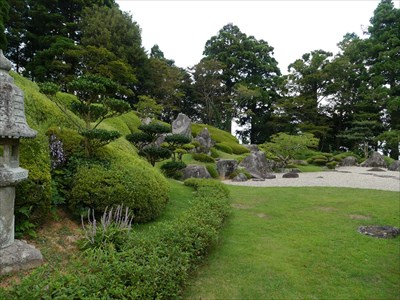
Japanese garden of Taimasan Shrine

Japanese garden of Taimasan Shrine
All three of these shrines are Iwami Country Shikinai shrines (the old and officially certified shrines).
==Digression==
Regarding the history of the former Shimane prefecture, I confirmed the microfiche at the National Diet Library in October 2009. It wasn't digitized yet at that time. The reason for browsing is that Shinzaburo Shimizu's "History of Iwami Deities" is quoted in the history of the former Shimane prefecture. This is an article about the Shikinai Shrines in Iwami Province.
At the foot of Mt. Taima, there are rice terraces in the Murodani area. It has been selected as one of the 100 best rice terraces. There is also a route from Orii to Prefectural Road 303 on Mt. Taima, but the width of the road is just one lane and you cannot pass each other. When I ran for the first time, I was worried that an oncoming car would come and turned pale. There is a road in the Murodani area from Ishida-guchi, Misumi-Town. This is recommended.
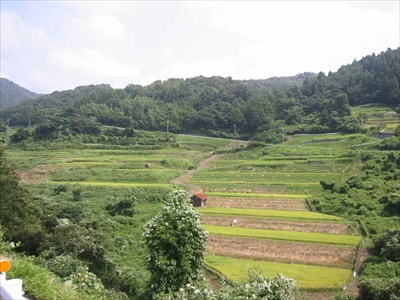
The Rice Terrace in Murodani
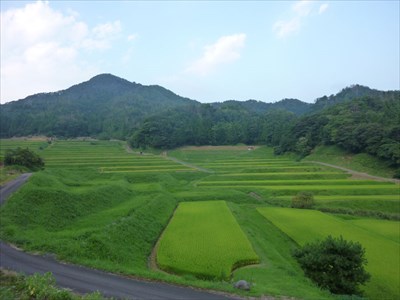
The Rice Terrace in Ino
At AmenoIwatoHiko Shrine, Iwami's night Kagura regular performances are currently held every Saturday. The two performances will be performed from 8 pm to 9 pm. Although it is a tourism kagura, it is performed in the hall of worship, so it is popular because it has a feeling similar to that of a dedication kagura.
Ono Shrine can be walked from JR Toda-Kohama Station. Toda Kakinomoto Shrine and Ebisu Shrine in Miyaga-shima are enshrined in the surrounding area. The view of the Sea of Japan around Miyaga-shima is also inspired by the Japanese-style painter Kaii Higashiyama.
"Myths and Legends of the Misumi Region" has a small number of pages, but it contains interesting legends such as the legend of Sahime, the legend of Itsukushima Myojin, and the legend of Oyamatsumi's giant.
==References==
- * 『出雲・石見の伝説 日本の伝説48』(酒井董美, 萩坂昇, 角川書店, 1980)pp.99-100
- * 『三隅地方の神話と伝説』(寺井実郎/編, 三隅時報社, 1960)pp.19-22
- * 『三隅町誌』(三隅町誌編さん委員会, 1971)pp.79-86
- * 『島根縣史 第2巻(国造政治時代)』(島根県史編纂掛/編, 名著出版, 1972)
- * 『島根県益田市民話集』(島根大学教育学部国語研究室/編, 島根大学昔話研究会, 1991)p.107
- * 藤井宗雄「石見国式内神社在所考」『神祇全書 第5輯』(思文閣, 1971)
- * 『伝承怪異譚――語りのなかの妖怪たち(三弥井民俗選書)』(田中瑩一, 三弥井書店, 2010)p.13